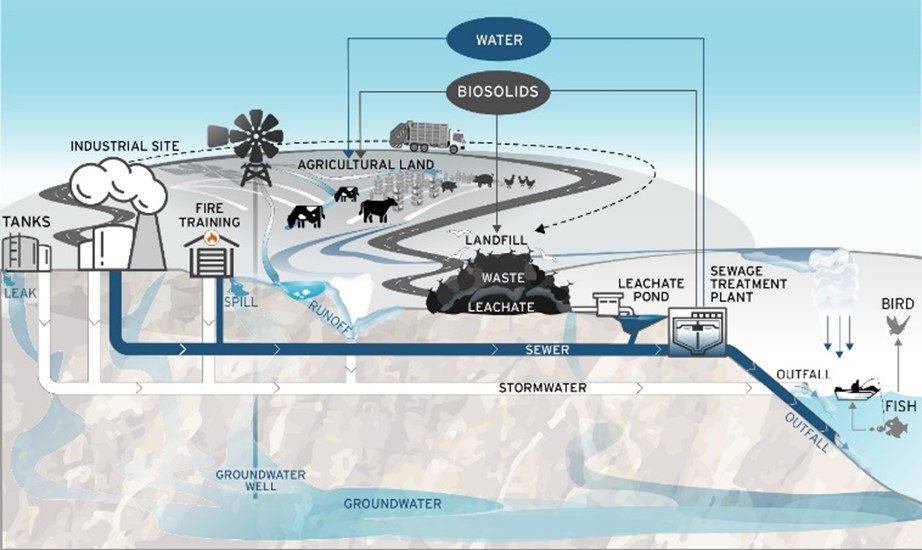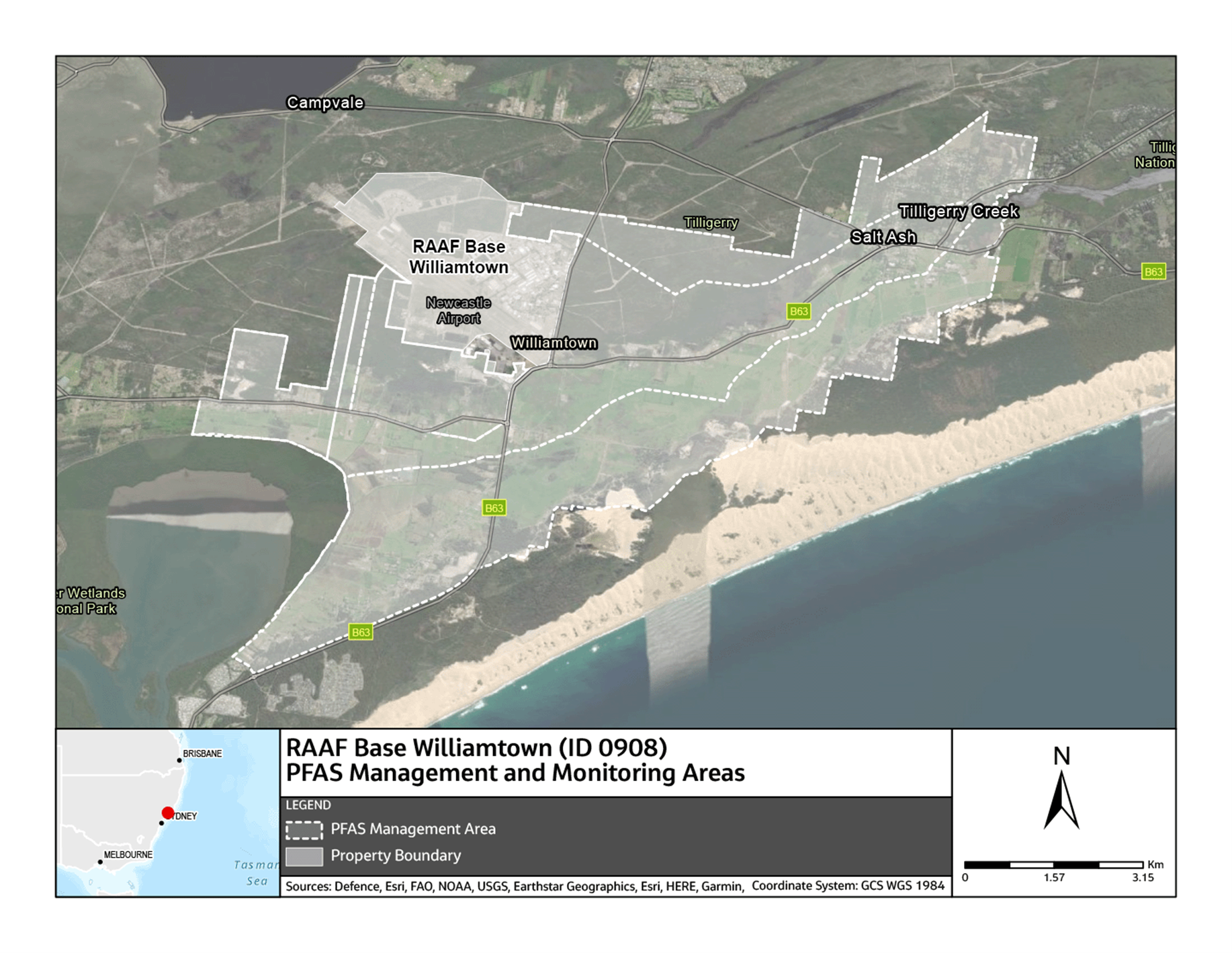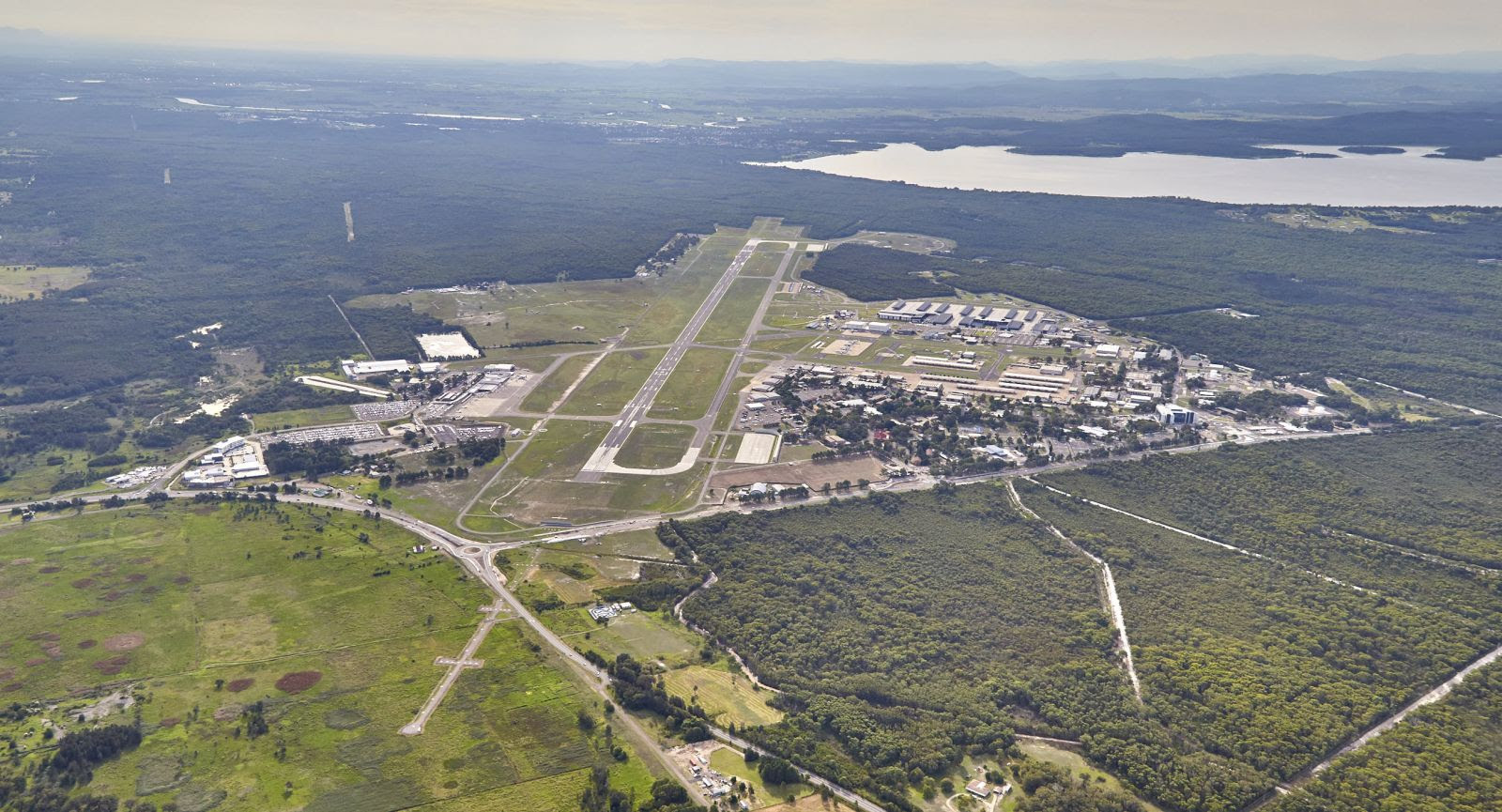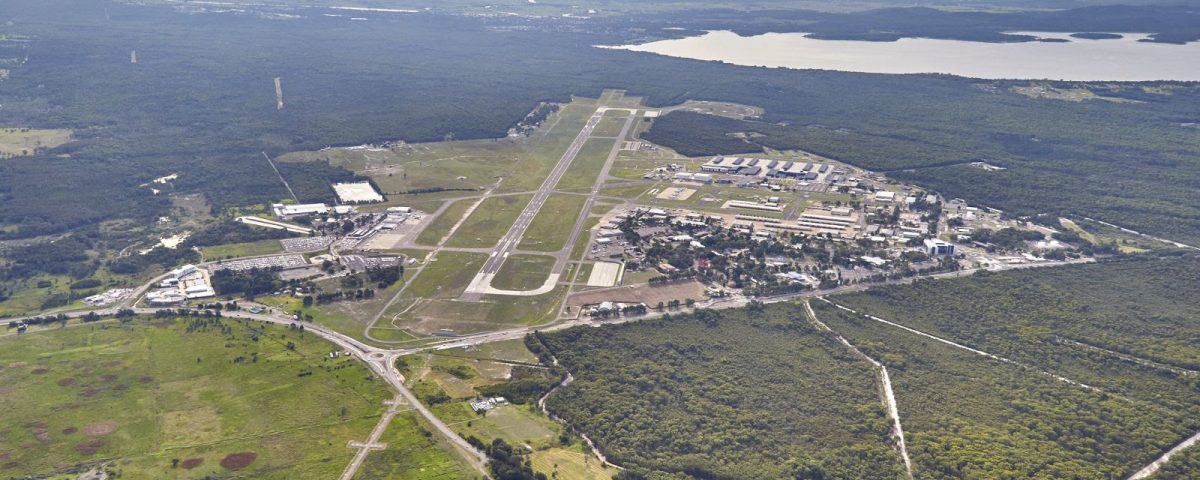
The crippling impacts of unmanaged seismicity on mine production and sustainability
June 17, 2024
Maximising efficiency: The role of flat, long, haul routes for autonomous haul trucks in mining
July 3, 2024What are Per- and Poly- fluoroalkyl substances (PFAS) and how are they affecting human and animal health, and our planet? These substances are found in items we may be using everyday (like our clothes, food packaging, and even sunscreen) and because they are highly water-soluble, they’re absorbed by the human body quite easily or transported through the environment. In the following blog, Atlantech Environmental Consultant Nina Rotton details the risks of PFAS, current Australian management practices, and explores a real-life case study involving the RAAF Base Williamtown in New South Wales.
By Nina Rotton
What are PFAS and what are the risks?
About PFAS
Per- and Poly- fluoroalkyl substances (PFAS) are a group of manufactured chemicals which include thousands of substances. The three most widely known PFAS are:
- perfluoro octane sulfonate (PFOS)
- perfluorooctanoic acid (PFOA)
- perfluoro hexane sulfonate (PFHxS).
Industrially produced since the 1940s, PFAS is often used worldwide as surface treatments for stain and water resistance. PFAS is commonly found in packaging (including food packaging), paper, fabric, cookware, cosmetics, sunscreens, and paint.
As PFAS have a high heat resistance and fire-retardant properties, they’re effective ingredients in fire-fighting foams. As they are highly water-soluble, they are easily absorbed and transported through the environment and the human body (see Figure 1).

Figure 1: PFAS environmental pathways (imaged sourced from EPA Victoria https://www.epa.vic.gov.au/for-community/environmental-information/pfas/pfas-in-the-environment)
Risk of PFAS
Most people are likely to have low levels of PFAS in their bodies due to the exposure through regular household and commercial products. Exposure to PFAS occurs through ingestion, including inhalation. People at higher risk of exposure are those who have occupations in the use or production of PFAS containing products (e.g. firefighting) and those who live in known PFAS contaminated areas. The U.S. Environmental Protection Agency (EPA) reported PFAS contamination in blood banks as early as 1999.
While a full understanding of the human health risk of PFAS requires ongoing research, many scientific studies have concluded that PFAS does have effects on fertility, children’s development, increased cancer risk, and decreased immunology. Additionally, studies targeting specifically PFOS found the chemicals cause toxic effects in humans including neurotoxicity, renal toxicity, immunotoxicity and endocrine disruption.
Another concern that PFAS pose to the environment and humans, is that they are chemicals of a stable nature meaning they bioaccumulate (build up) in the environment and do not have natural breakdown pathways; hence the more familiar term for PFAS as the ‘forever chemicals’.
The bioaccumulation capabilities of PFAS means that over time even small exposures of the chemicals can lead to potential toxicity effects and other health risks in humans and the environment.
As mentioned, the long-term risks to the environment and humans from the use of PFAS are still not fully understood and scientific research has only provided adequate studies for the effects of PFAS over the last 20 years. Even those studies have only been able to target specific groups of PFAS. PFAS were only confirmed as a likely human carcinogen by the U.S EPA in 2005 which sparked more in-depth risk assessments and investigations by other worldwide governmental agencies, including the establishment of the Australian PFAS Taskforce in 2016.

Current management processes in Australia
Australian PFAS Taskforce
The need for PFAS management and risk assessments has become more widely accepted as a priority by the Australian Government over the past 10 years.
The Australian PFAS Taskforce was established in 2016 within the Department of the Prime Minister and Cabinet and is currently under the Department of Climate Change, Energy, the Environment and Water. The taskforce is responsible for the coordination and oversight of the Australian Government’s management responses to PFAS contamination. The taskforce works closely with regulatory government agencies to help implement a consistent national standard for PFAS investigations, management, and community engagement.
The taskforce helped the coordination of the national framework for response to PFAS contamination in 2020 (Intergovernmental Agreement on a National Framework for Responding to PFAS Contamination | Federation).
National framework
The national framework is an intergovernmental agreement to support a consistent response to PFAS contamination across Australian sites using a precautionary approach.
The agreement states that: “The Parties recognise that early identification, preventive action, effective cooperation, and clear communication are core elements of this Agreement, to ensure timely and appropriate responses for the benefit of communities.”
The commitment by the Australian governments to PFAS management is highlighted by the National PFAS Position Statement. The agreement aligns with existing guidelines and legislation to protect human health and the environment from chemical contaminants.
Attached to the national framework are guidelines, protocols, management plans for guidance on implementing action response, as well as management and efficient engagement at PFAS-contaminated sites. These include:
- PFAS National Environmental Management Plan Version 2.0 (Version 3.0 currently in draft.)
- PFAS Contamination Response Protocol
- Health Based Guidance Values for PFAS.
State-based regulatory agencies such as the NSW EPA use the national framework as the basis for leading statewide PFAS investigations and adopting a precautionary approach to PFAS contamination to assess and minimise exposure. One case study example investigated by the EPA is the Williamtown Royal Australian Air Force (RAAF) Base located near Newcastle, NSW Australia.
Case Study: Williamtown RAAF
The Williamtown RAAF has been operating since 1941 and, like many other airport facilities across the country, the base has had historical use of firefighting foams. These foams contained high concentrations of PFAS, including PFOS and PFOA for at least 40 years before being phased out in 2010 in favour of foams with lower concentrations of PFAS.
An initial Stage 1 environmental assessment was carried out in 2013, identifying concentrations of PFAS in soil, sediment, and groundwater at several locations within and outside the RAAF Base.
In September 2015, the NSW government announced PFAS detections in and around the base, and a subsequent investigation determined the full extent of PFAS contamination. Human health and environmental risk assessments were released in 2017 and an ecological risk assessment was released in 2018.
Initial investigations led to the creation and implementation of an appropriate management plan for the PFAS area surrounding Williamtown RAAF. Data collected from the investigations also informed the development of the Williamtown Management Area (see Figure 2.)
The Development Management Plan for Williamtown RAAF includes ongoing monitoring of the environment, dietary health advice to residents, and remediation of known PFAS-contaminated source areas which, overtime, contributes to the reduction of PFAS concentrations in the area.
Remediation has included the removal of contaminated soils to approved disposal landfills, and soil washing trails. Groundwater remediation has happened onsite since 2016. There are two groundwater treatment plants on site to treat and recycle the water. Surface water was found to be a major pathway for PFAS migrating off site and surface water treatment is carried out on site to reduce the risks of surface water migration.

Figure 2: Williamstown RAAF PFAS management and monitoring area (https://www.defence.gov.au/about/locations-property/pfas/pfas-management-sites/raaf-base-williamtown)
How Atlantech can help
Environmental support
At Atlantech, we provide a comprehensive range of environmental planning and operational support across a wide range of industries. Our services include but are not limited to, environmental inspections, environmental monitoring, contaminated lands detailed site assessments, remediation recommendations, biodiversity offsets and ecological monitoring, revegetation activities, auditing, and project supervision.
Contact us today for a confidential, free discussion or view our full list of services.
More information
If you would like to learn more about the tolerable daily intake guidelines for PFAS, here is a helpful resource: https://www.health.gov.au/topics/environmental-health/about/environmental-toxins-and-contaminants/pfas
References
- New South Wales Environmental Protection Agency (2023), State Wide PFAS Investigation Program Fact Sheet. Available at: 23p4472-state-wide-pfas-investigation-program.pdf (nsw.gov.au)
- Giesy, JP., Kannan, K. (2002), Perfluorochemical surfactants in the environment, Environmental Science and Technology, 36(7): pp 146A-152A. Available at: Peer Reviewed: Perfluorochemical Surfactants in the Environment (acs.org)
- Australian Government PFAS Taskforce (Accessed 28 May 2024). Available at: What are PFAS? | Australian Government PFAS Taskforce
- Environmental Protection Agency (Accessed 28 May 2024). Available at: Our Current Understanding of the Human Health and Environmental Risks of PFAS | US EPA
- Jiuyi Li, Jing Sun, Pengyang Li (2022), Exposure routes, bioaccumulation and toxic effects of per- and polyfluoroalkyl substances (PFASs) on plants: A critical review, Environment International, Vol 158. Available at: https://doi.org/10.1016/j.envint.2021.106891
- Zeng, B. Song, R. Xiao, G. Zeng, J. Gong, M. Chen, P. Xu, P. Zhang, M. Shen, H. Yi (2019), Assessing the human health risks of perfluorooctane sulfonate by in vivo and in vitro studies Environment International, 126, pp. 598-610. Available at: https://doi.org/10.1016/j.envint.2019.03.002
- AFFF PFAS, RAAF Base Williamtown, Williamtown NSW, Stage 2 Environmental Investigation 14 September 2015 43218467RAAFWilliamtownStage2-EI-ReportFinal14September2015FullReport.pdf (archive.org.au)


